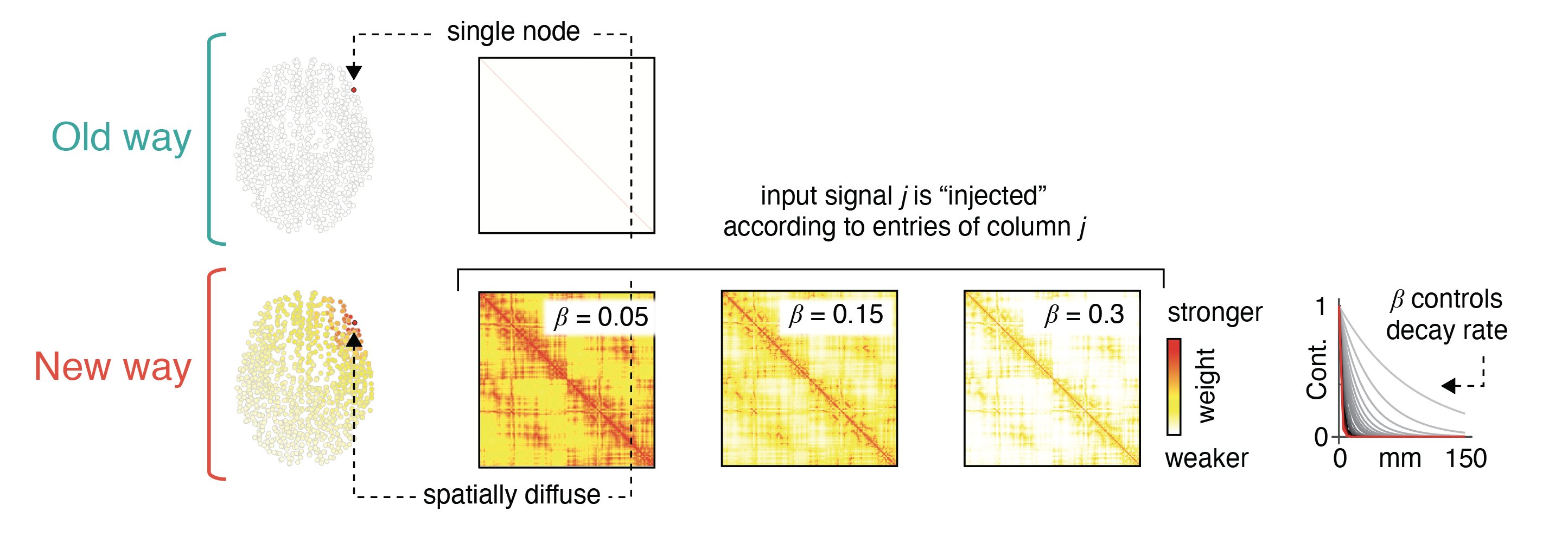This repository includes data and example code for illustrating the incorporation of spatial information into the optimal control framework.
In general, we consider the following linear dynamical system:
In this expression,
In most applications,
In our approach, we replace the canonical column vector
where
-
data/brain_states.mat:$1000 \times 11$ brain states from the paper. -
data/coordinates.mat:$1000 \times 3$ parcel centroids. -
data/structural_connectivity.mat:$1000 \times 1000$ structural connectivity matrix -
optimalControlContinuous.m: Code for obtaining the optimal inputs/trajectories. It takes as input the structural connectivity matrix$A$ , the input matrix$B$ , the parameters$\rho$ and$T$ (see the preprint for details), and the initial and target states,$x(t = 0)$ and$x(t = T)$ , respectively. The brain states should be$1000 \times 1$ vectors. -
main.m: code that reads in data, calculates the "local" and "spatial" input matrices, and calculates global energy for all$11 \times 11$ brain state transitions.
The data used here is publicly available and can be downloaded here. The optimal control function was originally written by Shi Gu (University of Pennsylvania).
Note that this code is designed to be generic. It's straightforward to replace the structural connectivity, parcel centroids, and brain states with a different dataset. Note also that there are no additional dependencies; code should work "out of the box".
DISCLAIMER: All software is provide as is.
If you use this code, please cite:
- Betzel, R. F., Puxeddu, M. G., Seguin, C., Bazinet, V., Luppi, A., Podschun, A., ... & Parkes, L. (2024). Controlling the human connectome with spatially diffuse input signals. bioRxiv, 2024-02. link to paper
- Gu, S., Betzel, R. F., Mattar, M. G., Cieslak, M., Delio, P. R., Grafton, S. T., ... & Bassett, D. S. (2017). Optimal trajectories of brain state transitions. Neuroimage, 148, 305-317. link to paper
- Betzel, R. F., Gu, S., Medaglia, J. D., Pasqualetti, F., & Bassett, D. S. (2016). Optimally controlling the human connectome: the role of network topology. Scientific reports, 6(1), 30770. link to paper
